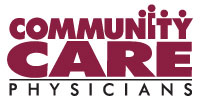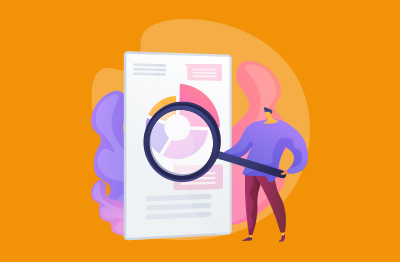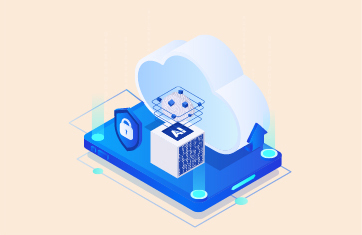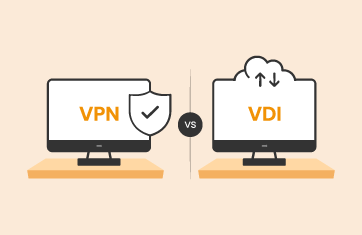 Many healthcare providers are modernizing their healthcare application and infrastructure monitoring strategies. Of course, there is never a magic silver bullet and so we publish detailed case studies, with the agreement of some of our customers, for other healthcare IT administrators to gain insights into the factors that drive choices and to allow them to see if there are methodologies or tools they may find useful.
Many healthcare providers are modernizing their healthcare application and infrastructure monitoring strategies. Of course, there is never a magic silver bullet and so we publish detailed case studies, with the agreement of some of our customers, for other healthcare IT administrators to gain insights into the factors that drive choices and to allow them to see if there are methodologies or tools they may find useful.
Today’s blog is just a quick one to highlight 4 recent healthcare case studies covering some of our customers IT monitoring and troubleshooting methodologies, 2 from the USA and 2 from Europe (The Netherlands).
4 Case Studies of Real Customer Application and Infrastructure Monitoring for Healthcare
1. Spadafy leverages eG Enterprise to deliver secure VDI and professional services to healthcare providers (eginnovations.com)
 Spadafy (in addition to consultancy services) offers a fully managed VDI service to hospitals and healthcare groups. Customers range in size from small 25 bed hospitals to multi-site systems supporting multiple hospitals and clinics with 10000+ users. Common applications used include: EMR systems such as Epic and Cerner, Microsoft 365, as well as specialist radiology and PACS apps. Applications are virtualized or offered through virtual desktops for access by in-house hospital IT teams, rather than Spadafy engineers. Details of how an MSP (Managed Service Providers) solution for VDI can be leveraged in healthcare are included.
Spadafy (in addition to consultancy services) offers a fully managed VDI service to hospitals and healthcare groups. Customers range in size from small 25 bed hospitals to multi-site systems supporting multiple hospitals and clinics with 10000+ users. Common applications used include: EMR systems such as Epic and Cerner, Microsoft 365, as well as specialist radiology and PACS apps. Applications are virtualized or offered through virtual desktops for access by in-house hospital IT teams, rather than Spadafy engineers. Details of how an MSP (Managed Service Providers) solution for VDI can be leveraged in healthcare are included.
2. Regional Healthcare Group Realizes Significant Time & Cost Savings with eG Enterprise (eginnovations.com)
 Community Care Physicians (CCP) is a modern and efficient healthcare organization servicing approximately 1.2 million residents of the Capital Region of New York. The organization’s 1,800 medical and admin staff provide care to 200,000 patients across its 75 practices.
Community Care Physicians (CCP) is a modern and efficient healthcare organization servicing approximately 1.2 million residents of the Capital Region of New York. The organization’s 1,800 medical and admin staff provide care to 200,000 patients across its 75 practices.
CCP’s tech stack has 750 servers, including 260 Citrix servers, 200+ key medical applications, Office 365, multiple EHR systems, and various Tier 1 healthcare applications, Microsoft SQL Server for data storage and analysis, VMware Sphere for virtualization and IGEL thin clients.
Initially, CCP used basic network and database monitoring tools, but they needed their monitoring to focus on the key Citrix services. Switching to eG Enterprise provided the IT team with a monitoring solution that gave them deep visibility into the performance of their virtual applications and helped them to identify and fix problems before it impacted end users.
3. Dutch university hospital guarantees continuity of IT landscape with transparent end-to-end monitoring of eG Innovations with eG Enterprise
![]() This leading Dutch University hospital extended their IT monitoring infrastructure beyond their VMware, Citrix and Microsoft landscape to achieve end-to-end visibility into their EHR applications. A solution has been implemented to ensure the most important value chains around the HiX EHR system, New Workspace Environment and patient portal are continuously monitored. Incidents can be easily tracked via support tickets using the TOPdesk ITSM integration.
This leading Dutch University hospital extended their IT monitoring infrastructure beyond their VMware, Citrix and Microsoft landscape to achieve end-to-end visibility into their EHR applications. A solution has been implemented to ensure the most important value chains around the HiX EHR system, New Workspace Environment and patient portal are continuously monitored. Incidents can be easily tracked via support tickets using the TOPdesk ITSM integration.
4. Citrix Virtualization Solutions – Case Study for GHZ Hospitals (eginnovations.com)
 The Groene Hart Ziekenhuis (GHZ) in Gouda is a modern, flexible, efficient and enterprising hospital servicing approximately 300,000 residents of the Green Heart area of the Netherlands.
The Groene Hart Ziekenhuis (GHZ) in Gouda is a modern, flexible, efficient and enterprising hospital servicing approximately 300,000 residents of the Green Heart area of the Netherlands.
The IT team manages a centralized infrastructure running on Citrix including:
- Over 550 servers are used for accessing more than two hundred key medical applications
- Several web interface servers and a data collector
- Microsoft SQL server for storing data
- VMware vSphere for virtualizing all the key server applications
- RES Software for automated management of the entire infrastructure
Initially, the requirement for using eG Enterprise was to identify the root causes of performance problems. Staff and patients were being impacted by slow applications, but the monitoring tools employed by the GHZ ITOps team could only tell them if systems were up or down.
4 Key Trends for ITOps Teams in Healthcare Application and Infrastructure Monitoring
Trend 1 – Proving it isn’t VDI
Across a number of these case studies, we saw a very real need for IT teams to prove it wasn’t the VDI (Citrix / VMware) or Microsoft infrastructure at fault. The teams tasked with provisioning and maintaining virtual servers or desktops were often not those responsible for publishing or deploying specialist apps within them. As an MSP this was particularly important for Spadafy to effectively work with and communicate with their customers.
Trend 2 – Database monitoring matters to ensure healthcare application performance
Most of our healthcare customers rely on essential database systems, common variants include Microsoft SQL Server and Oracle Databases. Traditional EUC point solutions for Citrix or VMware rarely include detailed database monitoring tools, with eG Enterprise being a rare exception.
Details of eG Enterprise support for monitoring databases is available, here: Top Database Monitoring Tools | eG Innovations.
Trend 3 – Increasing Demand for Out-of-the-box AIOps powered proactive alerting and automated root-cause diagnostics
All of the organizations featured in these case studies were increasingly adopting automation to increase their IT teams’ capacities to do more with static resources. With patient safety and outcomes dependent on reliable IT services, averting issues and rapid remediation were critical needs.
The fact eG Enterprise alerting and root-cause diagnostic tools are configured out-of-the-box to provide system administrators with alerts as soon as the first symptoms of an application or infrastructure problem was usually key to decision to select eG Enterprise.
Read more on AIOPs driven automation and alerting: AIOps Powered Monitoring | eG Innovations.
Out-of-the-box dashboards and reports also featured as key features for involving all stakeholders in healthcare environments.
Trend 4 – adopting APM (Application Performance Monitoring) features to monitor Java, .NET and similar apps used in healthcare
Especially in Europe we are seeing healthcare organizations adopt APM tools and features such as eG Enterprise, Dynatrace, Datadog or AppDynamics. The tools allow administrators to troubleshoot and monitor critical applications based on Java, .NET, PHP, Node.js and similar. Because of the prevalence of Citrix, VMware and similar VDI infrastructure within healthcare IT is often the APM tool choice as unlike others it offers comprehensive EUC capabilities too. Learn more about APM: Application Performance Monitoring (APM) | eG Innovations.
eG Enterprise is an Observability solution for Modern IT. Monitor digital workspaces,
web applications, SaaS services, cloud and containers from a single pane of glass.
Learn more about application monitoring for healthcare
- Find out about eG Enterprise solutions for healthcare, here: Healthcare IT Application Monitoring Solutions | eG Innovations
- To read more case studies on customer usage of eG Innovations’ platform, including in other sectors and industries beyond healthcare such as retail, finance, education and manufacturing – see: Case Studies | eG Innovations



 Rachel has worked as developer, product manager and marketing manager at Cloud, EUC, application and hardware vendors such as Citrix, IBM, NVIDIA and Siemens PLM. Rachel now works on technical content and engineering and partner liaison for eG Enterprise
Rachel has worked as developer, product manager and marketing manager at Cloud, EUC, application and hardware vendors such as Citrix, IBM, NVIDIA and Siemens PLM. Rachel now works on technical content and engineering and partner liaison for eG Enterprise 


